Digital Nightscapes: Capturing Intuition in Dark Mode
This project, Digital Nightscapes, is not about mastering digital art tools or demonstrating technical prowess. It’s about rediscovering the essence of creativity and expression, even when the medium feels unfamiliar or untraditional. For me, this series represents healing—a response to the burnout from years of digital overwork and a way to reframe technology as a space for meaningful expression rather than a source of stress.
Before I began this project, my life revolved around digital screens. I worked in tech, championing remote work and pushing for efficiency by moving manual processes online. It was a lonely yet liberating time as I transitioned my team to fully remote operations and moved from Japan to Vancouver. However, despite living in a beautiful vintage apartment just five minutes from the ocean, I felt disconnected from my surroundings. My world had shrunk to the size of a screen.
Every day felt the same—calls scheduled to “catch up” felt systemic and structured, replacing the casual, grounding moments of joy I used to share with coworkers, like taking desert breaks together. I worked across time zones, balancing multiple projects, and while I appreciated the global connections, it left me untethered. Even social communication moved to digital platforms, amplifying my sense of disconnection from the physical world around me.
I longed to reconnect with something tangible. Nature became my sanctuary, a reminder of life beyond the screen. Inhaling the ocean air in Vancouver helped me heal and reflect. This realization marked the beginning of my journey to reclaim creativity as a grounding force.
Finding Inspiration
When I travel, I sometimes don’t have the painting tools I want to bring along. I prefer mixed media, and my favorite acrylics are hard to use outside since I don’t want to make a mess at someone’s place. The Notes app has always been my medium for jotting things down, even though it’s risky—things can get deleted, disappear, or get lost. It’s not easy to organize, but it’s accessible, and accessibility matters for intuitive thoughts to land.
Last year, I picked up an art book My Window by David Hockney, where he captured landscapes from his window using an iPad or something digital. I guess that has something to do with my inspiration. I started opening the Notes app while lying on an uncomfortable couch in my living room, or on a futon spread out on the floor of my cousin’s place, or in the dark in my bedroom. A little bit of laziness really represents me and tells a story, doesn’t it?
Reconnecting with My Creative Roots
Reconnecting for me wasn’t about mastering Photoshop or illustration tools. Instead, it was about allowing myself to create without judgment. The voice inside me often criticized: “What is this? It’s just a doodle on a screen.” “This is digital and far less valuable than a physical painting.” “This can’t even be printed or turned into a tangible product.” These voices, though persistent, were devils to my creativity. I’ve come to understand that accepting this form of expression, however unconventional it may seem, is crucial.
Projects like this became an outlet—a way to merge the digital with the organic, turning screens from a source of burnout into a tool for mindful expression. Through this journey, I’ve come to see digital art as a space for reflection, healing, and growth.
Each piece in this collection tells a story of personal discovery, artistic freedom, and the courage to be authentic in a world that often challenges our true selves. Visit the I Love My Colors collection page to explore these unique works and learn more about how they represent the diversity and vibrancy of LGBTQIA+ identities. By collecting a piece from this series, you’re not just supporting my art—you’re standing in solidarity with queer artists and their journeys.
A Sketchbook of the Mind
These digital paintings are very momental, capturing my brain like a sketchbook. They also have an element of poetry or short stories that pop up in my mind, which I jot down on the Notes app. For some, these paintings might look like simple doodles, and that’s valid. Yet, for me, they are deeply meaningful because they represent my ability to "Create" and "Express" when a preferred medium was taken away.
Discover the "I Love My Colors" Collection
If you resonate with themes of queer solidarity, creative vulnerability, and the power of spontaneous art, I invite you to explore my I Love My Colors collection. This vibrant and expressive series within my Digital Nightscapes collection captures the essence of queer identity, resilience, and the fluidity of love. It’s a celebration of embracing your true colors, imperfections and all.
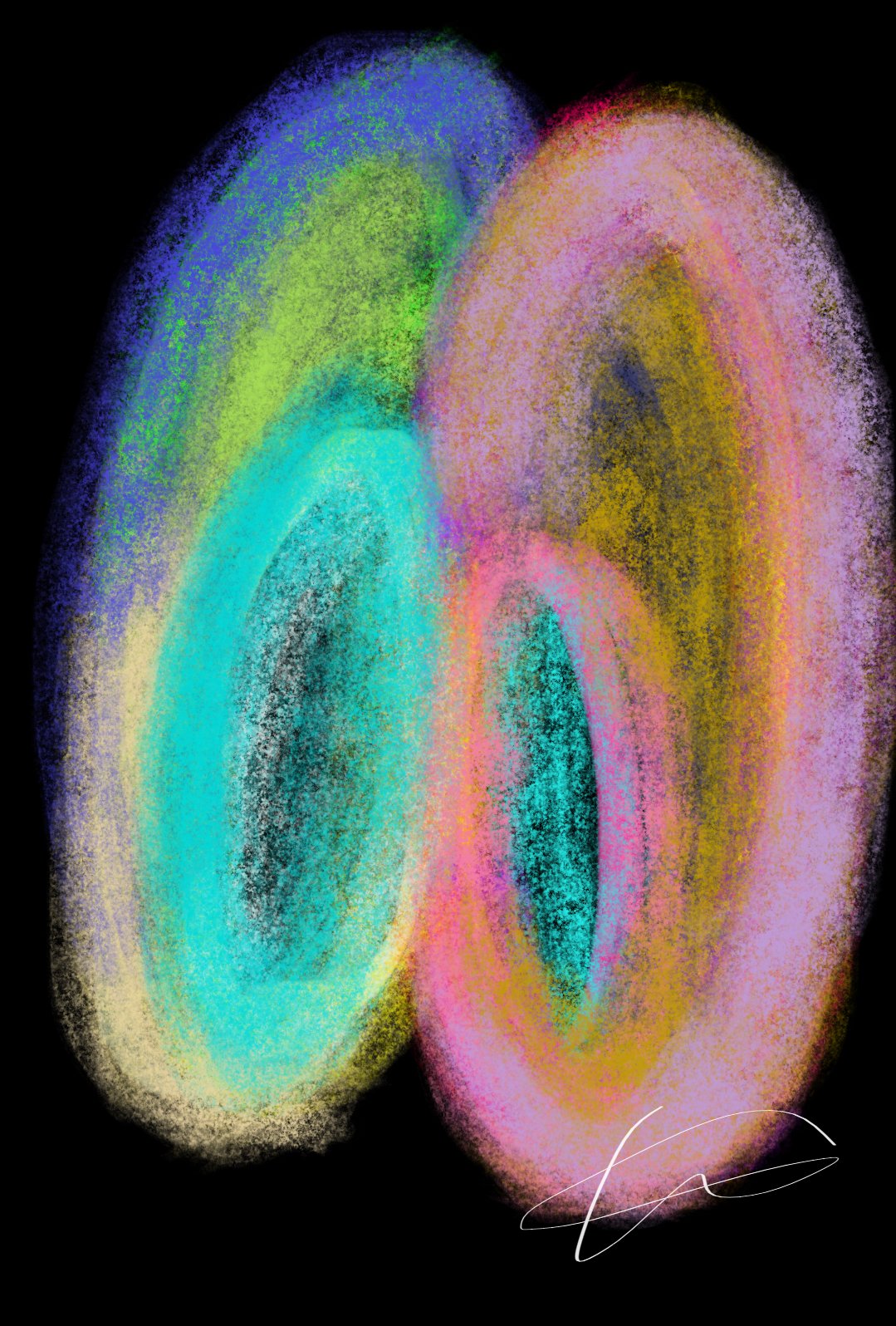
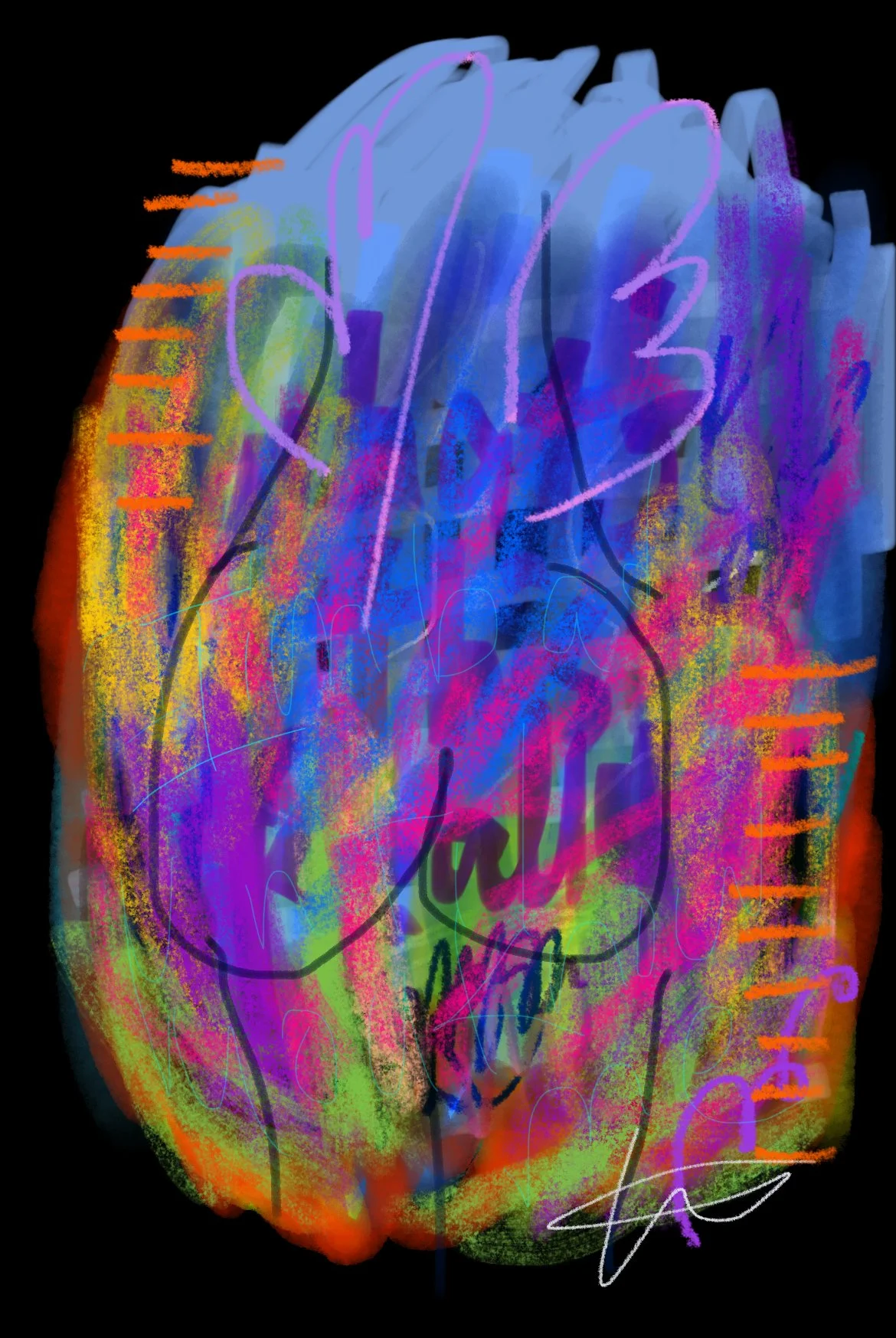
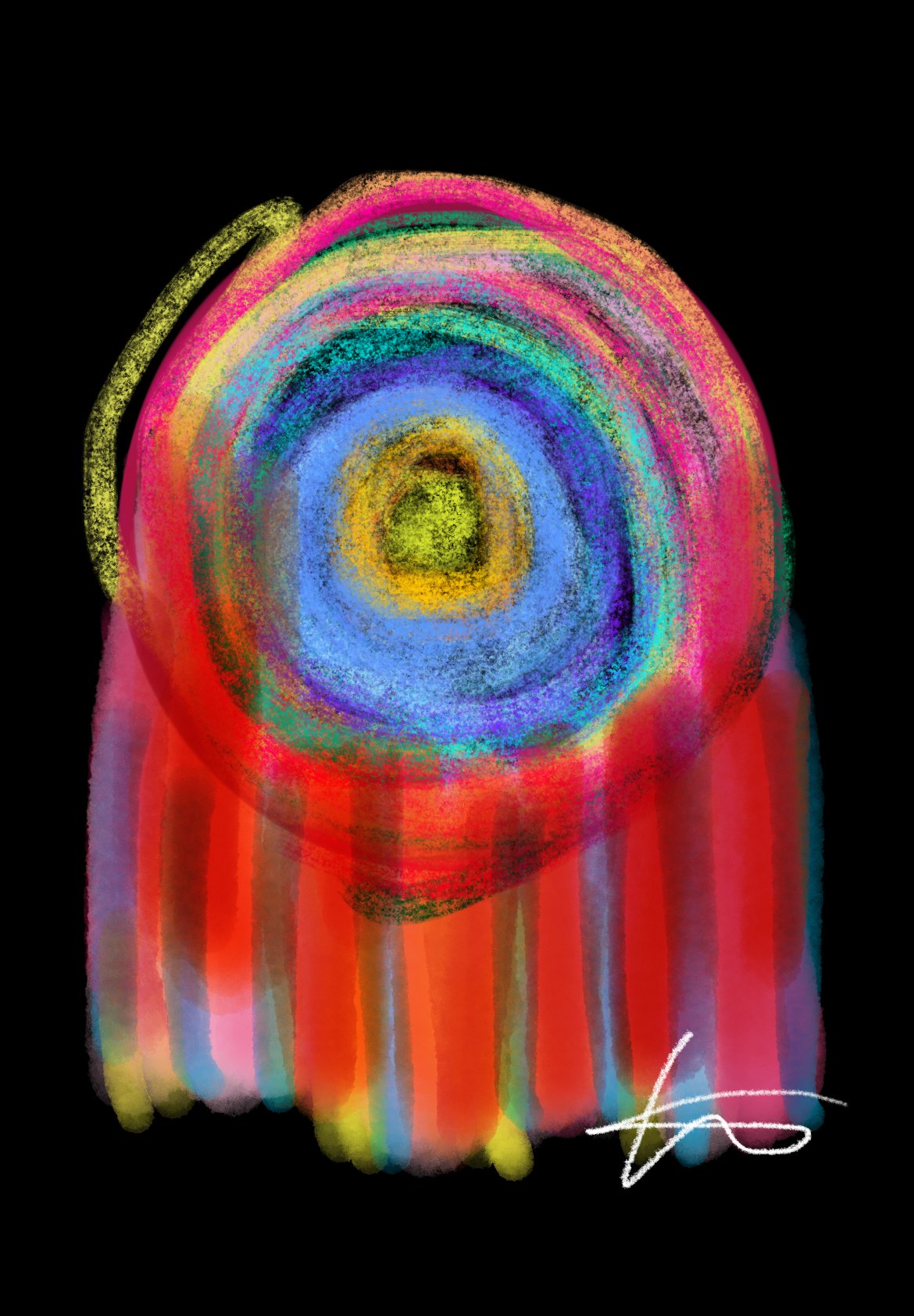
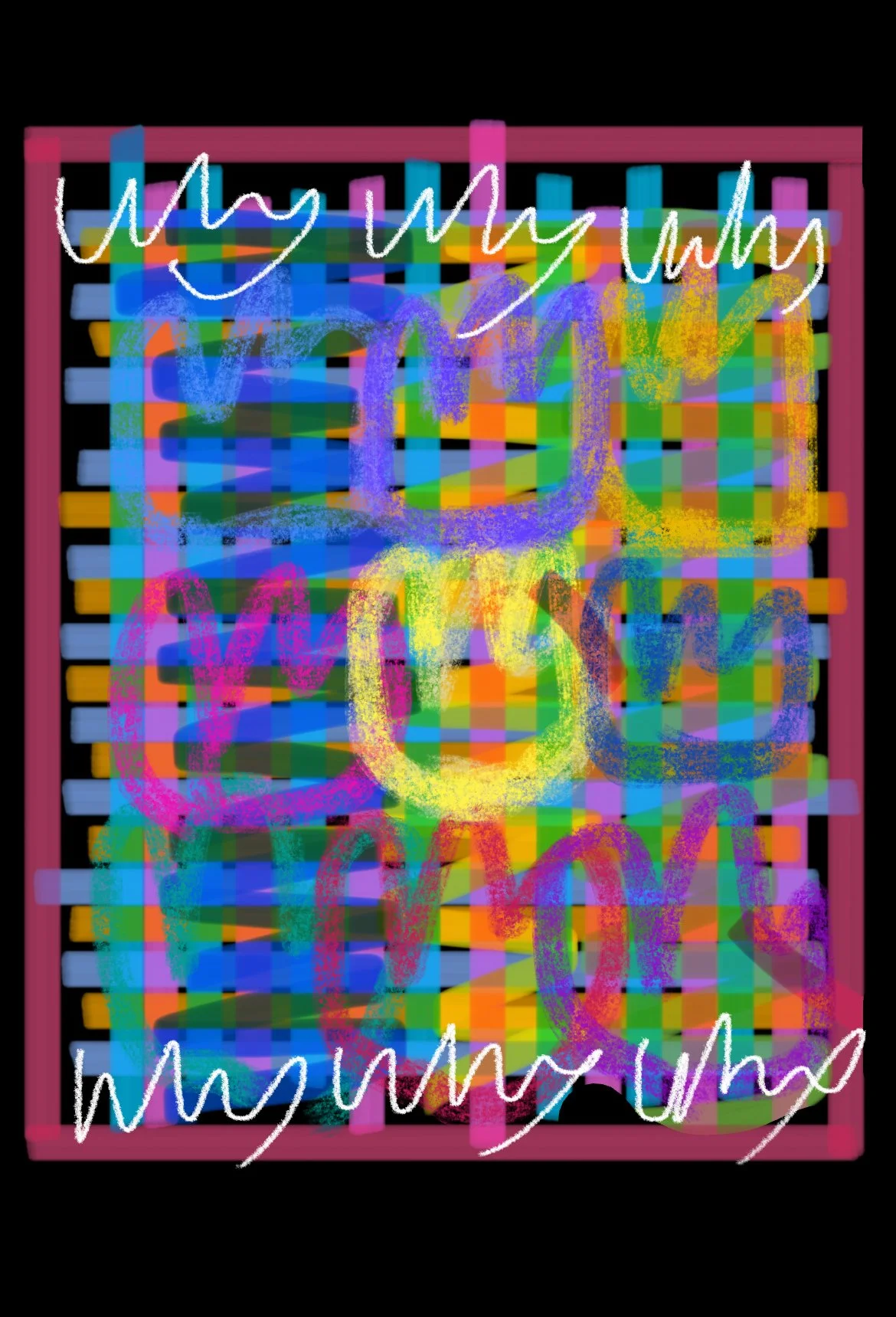
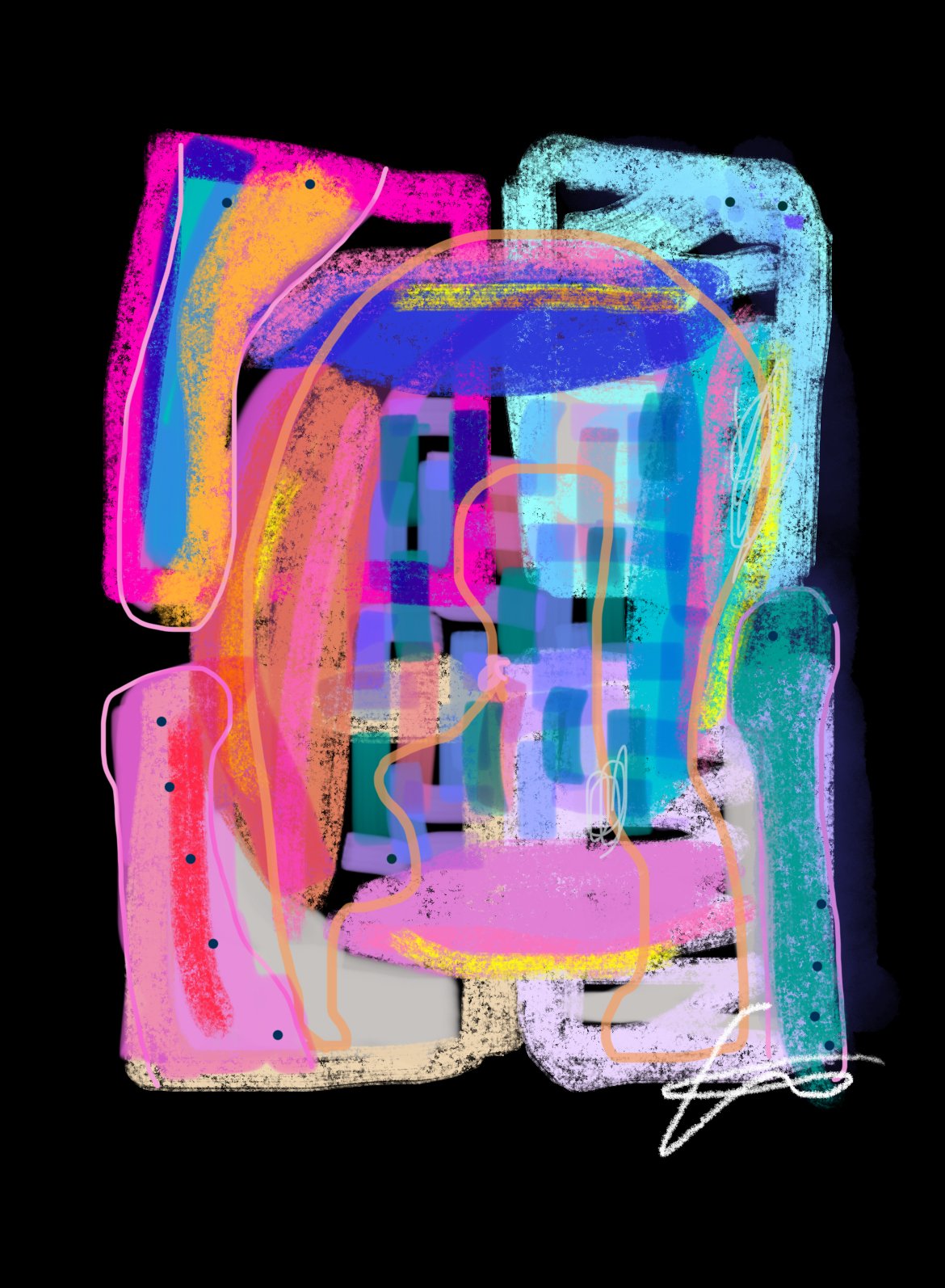
FAQ
What is digital art in contemporary art?
Digital art in contemporary art refers to artworks created using digital technology, often involving computer software, digital tools, and platforms. Artists use tools like graphic design software, digital painting apps, and even devices like tablets and phones to create their works. It blurs the lines between traditional art forms and modern technology.
What is digital painting in art?
Digital painting is a form of art where artists use digital tools, such as stylus pens and software (like the iPhone Notes app, for example), to create artworks that mimic traditional painting techniques. It offers a unique space for creative freedom, as artists can work in any environment and on various devices.
How does digital technology impact contemporary art?
Digital technology has revolutionized contemporary art by providing artists with new mediums and platforms to experiment with. From digital painting apps to interactive installations, technology allows artists to push boundaries, reach wider audiences, and explore innovative techniques that were once impossible with traditional tools.
Who is the most famous digital painter?
David Hockney, renowned for his use of digital tools like the iPad to capture landscapes and daily scenes, is one of the most famous digital painters. His book My Window showcases his exploration of digital art, and his work has inspired many contemporary artists to embrace digital painting.
What is contemporary digital art?
Contemporary digital art is the use of digital tools and technologies in creating art. It encompasses various forms, including digital paintings, 3D digital works, animations, and interactive media. Contemporary digital artists use technology to experiment, innovate, and express new ideas, often challenging the concept of art itself.
What is contemporary media art?
Contemporary media art is art that uses digital media and technology as its medium. It can include video art, digital installations, virtual reality, and multimedia performances. This form of art explores the relationship between art, technology, and society in the modern era.
How does digital technology impact contemporary art?
Digital technology influences contemporary art by offering new tools, techniques, and opportunities for creating, displaying, and experiencing art. Artists can work remotely, collaborate globally, and access a wide range of digital resources to express their ideas. This evolution expands the possibilities for creating interactive and immersive art experiences.
Who is the most famous digital artist?
The most famous digital artist is perhaps Refik Anadol, known for his innovative use of AI and machine learning to create stunning data-driven art installations. His works blur the lines between art and technology, pushing the boundaries of what digital art can represent.
